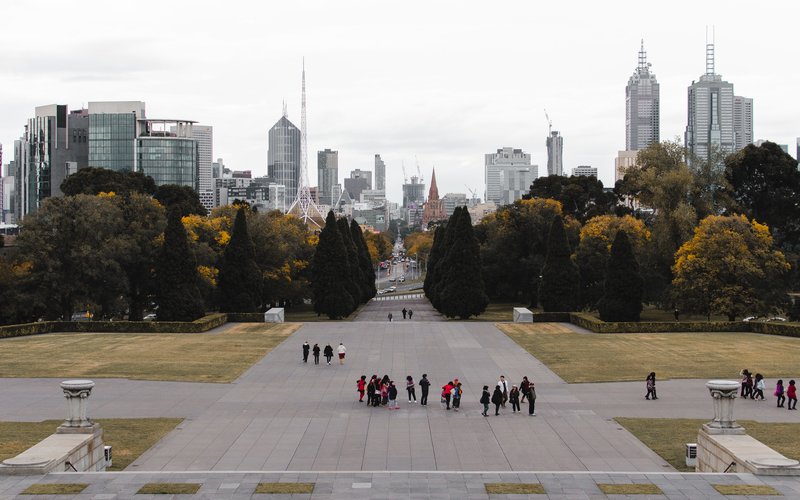Domain analysis found while there was reason for optimism, conditions were likely to remain subdued in most parts of the country in the latter half of the year.
Despite fears of 20-30% property price drops, the property market has stabilised in recent months, and most indicators point to a rebounding but sluggish market.
Buying a home or looking to refinance? The table below features home loans with some of the lowest variable interest rates on the market for owner occupiers.
| Lender | Home Loan | Interest Rate | Comparison Rate* | Monthly Repayment | Repayment type | Rate Type | Offset | Redraw | Ongoing Fees | Upfront Fees | Max LVR | Lump Sum Repayment | Extra Repayments | Split Loan Option | Tags | Features | Link | Compare | Promoted Product | Disclosure |
|---|---|---|---|---|---|---|---|---|---|---|---|---|---|---|---|---|---|---|---|---|
5.54% p.a. | 5.58% p.a. | $2,852 | Principal & Interest | Variable | $0 | $530 | 90% |
| Promoted | Disclosure | ||||||||||
5.49% p.a. | 5.40% p.a. | $2,836 | Principal & Interest | Variable | $0 | $0 | 80% |
| Promoted | Disclosure | ||||||||||
5.64% p.a. | 5.89% p.a. | $2,883 | Principal & Interest | Variable | $250 | $250 | 60% |
| Promoted | Disclosure | ||||||||||
5.64% p.a. | 5.89% p.a. | $2,883 | Principal & Interest | Variable | $248 | $350 | 60% |
| Disclosure |
Domain economist Trent Wilshere said a number of factors had led to the more optimistic outlook.
"Business and consumer confidence have rebounded, employment and job advertisements have started to recover and business output is rebounding," Mr Wilshere said.
"The OECD (Organisation for Economic Co-operation and Development) expects Australia’s economy to perform better than most other countries in the year ahead.
"But even with the better than expected recovery, economic conditions will remain subdued, with the unemployment rate and underemployment likely to remain elevated until at least 2022."
Mr Wilshere said clearance rates and auction numbers were returning to normal levels, buyer confidence was rebounding and rental markets were stabilising.
Read: Which regions have seen the biggest property price falls since COVID-19 hit?
How the property market will look at the end of the year
Mr Wilshere said the most likely outlook for the property market was for prices to fall modestly in some areas and be broadly steady in others.
"But given the unprecedented nature of the COVID-19 recession, the outlook for the property market for 2020 is highly uncertain," he said.
"The key factor supporting prices so far is that few people have been forced to sell their homes due to losing their jobs or having their incomes cut.
"This has been enabled by the government’s financial support packages assisting households whose income has fallen, in combination with banks allowing people in financial difficulties to defer mortgage repayments."
Mr Wilshere said Perth, Adelaide, and Canberra were the markets most likely to rebound fastest.
"Prices are likely to grow at a modest pace and sales activity should pick-up.
"There are few or no COVID-19 cases in these cities, meaning the local economies should be able to operate fairly normally."
Inner-city Melbourne and Sydney look to be most at risk of price falls, due to large proportion of renters, significant job losses and little to no immigration.
"Inner Brisbane, inner Perth, the Gold Coast and Sydney’s eastern suburbs also look more vulnerable to price falls due to job losses and a higher proportion of investment properties, but not to the same extent as Sydney and Melbourne," Mr Wilshere said.
The biggest risks to recovery
Mr Wilshere said a widespread second wave of COVID-19 infections would derail Australia’s economic recovery and likely result in widespread property price falls and a slowdown in transactions.
"Governments will also be less likely to offer the substantial financial support that was offered in the initial coronavirus outbreak and banks will also be less likely to offer mortgage deferrals to as many clients," he said.
"Many businesses that survived the initial outbreak and shutdown may shut if there is a second wave, resulting in a spike in unemployment and a drop-off in consumer confidence.
"So a second wave will likely lead to an increase in forced sales, which will weigh on prices."
He said the scheduled end of JobKeeper and JobSeeker, as well as mortgage deferrals could create a fiscal or economic cliff.
"The fiscal cliff will severely harm the economic recovery that is underway. Due to this risk, the government should continue to provide support to the most affected households and businesses beyond September, despite recent comments about cutting back spending."
There is a chance of a rapid rebound later this year
Mr Wilshere said while the downside risks were larger, there was still the potential for a more rapid market rebound.
"Interest rates, a key driver of property prices, are at record low levels and the RBA has stated that rates will remain very low for years.
"If COVID-19 outbreaks are contained and the economy recovers, then investors and owner-occupiers will be more willing to borrow and take advantage of greater borrowing capacity.
"First-home buyers will also be keen to take advantage of the government incentives such as the First Home Loan Deposit Scheme and HomeBuilder if the job market continues to improve."

Ready, Set, Buy!
Learn everything you need to know about buying property – from choosing the right property and home loan, to the purchasing process, tips to save money and more!
With bonus Q&A sheet and Crossword!







 Denise Raward
Denise Raward
 Harry O'Sullivan
Harry O'Sullivan

 Aaron Bell
Aaron Bell
 Rachel Horan
Rachel Horan

